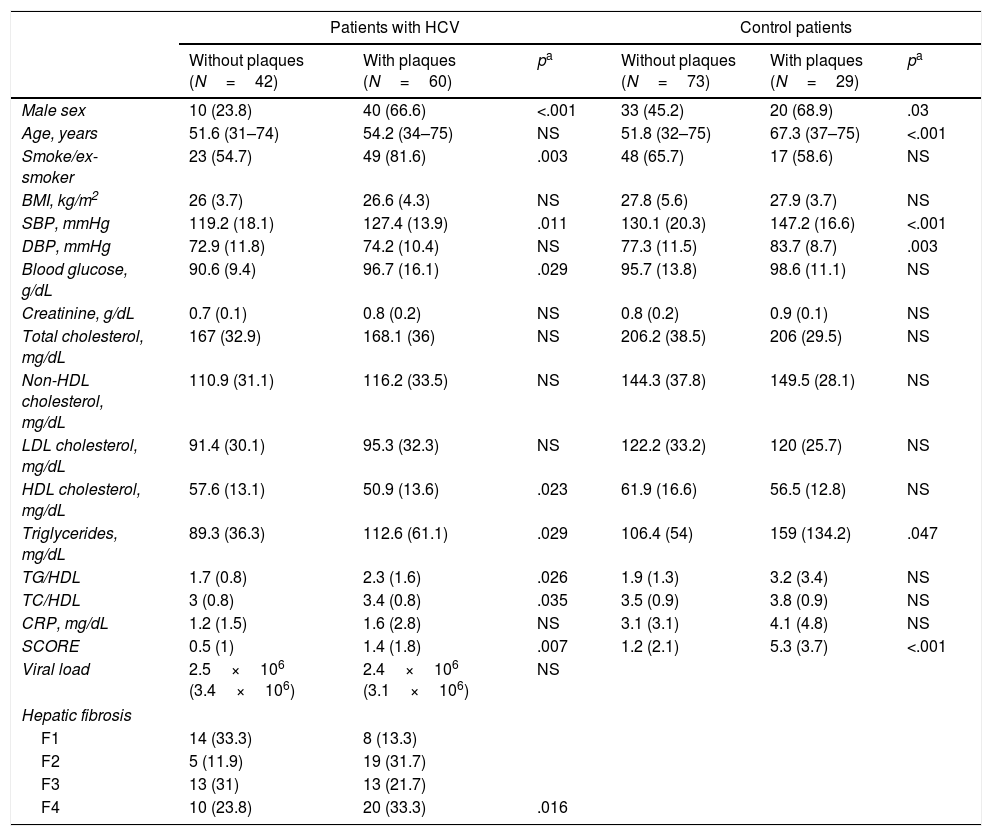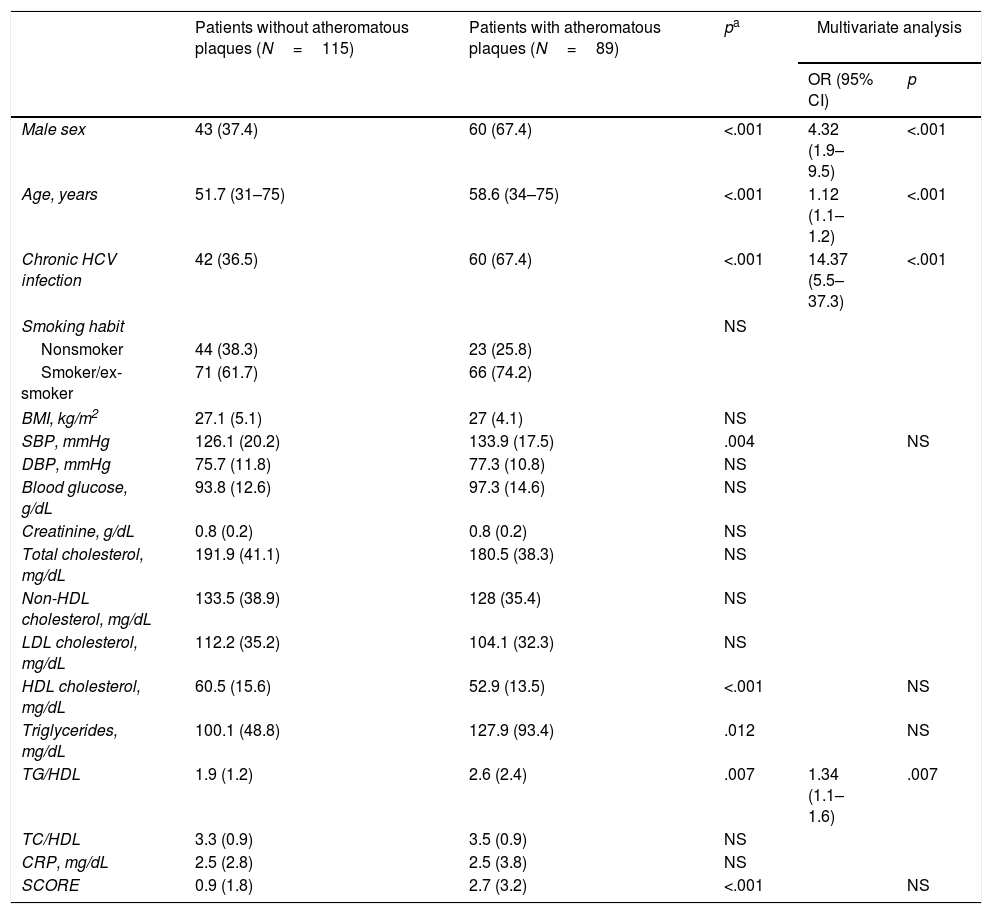The association between subclinical atheromatosis and chronic hepatitis C virus (HCV) infection is unknown but is relevant now that antivirals are improving the survival of patients with the infection.
ObjectivesTo determine whether HCV is an independent risk factor for subclinical atheromatosis and to analyze the changes in lipid profiles according to viral RNA levels and hepatic fibrosis.
Patients and methodsWe conducted an observational, cross-sectional study that included 102 HCV-positive patients and 102 HCV-negative patients with parity in terms of sex and age, with no history of cardiovascular or kidney disease or diabetes. Atheromatosis (the presence of atheromatous plaques) and the carotid intima-media thickness (CIMT) were assessed using ultrasonography of the carotid and femoral arteries.
ResultsThere was a greater presence of atheromatosis in any vascular territory in HCV-positive patients than in the patients without infection (58.8% vs. 28.4%, p<.0001). In the multivariate analysis, the factors significantly associated with atheromatosis included HCV infection (OR, 14.37 [5.5–37.3]; p<.001), age (OR, 1.12 [1.1–1.2]; p<.001), male sex (OR, 4.32 [1.9–9.5]; p<.001) and the triglyceride/HDL cholesterol coefficient (TG/HDL-indirect indicator of insulin resistance) (OR, 1.34 [1.1–1.6]; p=.007). The HCV-positive patients with atheromatous plaques had a higher TG/HDL coefficient but no significant differences in terms of the viral load or degree of hepatic fibrosis and with a ‘low risk’ lipid profile.
ConclusionsHCV infection is an independent risk factor for subclinical atheromatosis. Systemic arterial ultrasonography for this population improves the cardiovascular risk assessment beyond lipid profile abnormalities and the risk calculation using SCORE tables.
Se desconoce la asociación entre ateromatosis subclínica e infección crónica por el virus de la hepatitis C (VHC), relevante ahora que los antivirales mejoran la supervivencia en los pacientes infectados.
ObjetivosConocer si el VHC es factor de riesgo independiente de ateromatosis subclínica y analizar las modificaciones del perfil lipídico según niveles de ARN viral y fibrosis hepática.
Pacientes y métodosEstudio observacional y transversal; incluye 102 pacientes VHC positivos y 102 sujetos VHC negativos con paridad de sexo y edad, sin antecedentes de enfermedad cardiovascular, renal ni diabetes. La ateromatosis (presencia de placas de ateroma) y el grosor íntima-media carotídeo (GIMc) se evaluó mediante ecografía de arterias carótidas y femorales.
ResultadosLa presencia de ateromatosis en cualquier territorio vascular fue mayor en pacientes VHC que en sujetos no infectados (58,8% frente a 28,4%, p<0,001). En el análisis multivariante, los factores significativamente asociados con ateromatosis incluyeron infección por VHC (OR=14,37 [5,5-37,3]; p<0,001), edad (OR=1,12 [1,1-1,2]; p<0,001), sexo masculino (OR=4,32 [1,9-9,5]; p<0,001) y el coeficiente triglicéridos/colesterol HDL (TG/HDL-indicador indirecto de insulinorresistencia) (OR=1,34 [1,1-1,6]; p=0,007). Los pacientes VHC con placas de ateroma presentaban mayor coeficiente TG/HDL, sin diferencias significativas en cuanto a la carga viral ni grado de fibrosis hepática con un perfil lipídico de «bajo riesgo».
ConclusionesLa infección VHC es factor de riesgo independiente de ateromatosis subclínica. La ecografía arterial sistémica en esta población mejora la evaluación del riesgo cardiovascular más allá de las alteraciones del perfil lipídico y del cálculo de riesgo por tablas SCORE.
Article
Diríjase desde aquí a la web de la >>>FESEMI<<< e inicie sesión mediante el formulario que se encuentra en la barra superior, pulsando sobre el candado.

Una vez autentificado, en la misma web de FESEMI, en el menú superior, elija la opción deseada.

>>>FESEMI<<<












